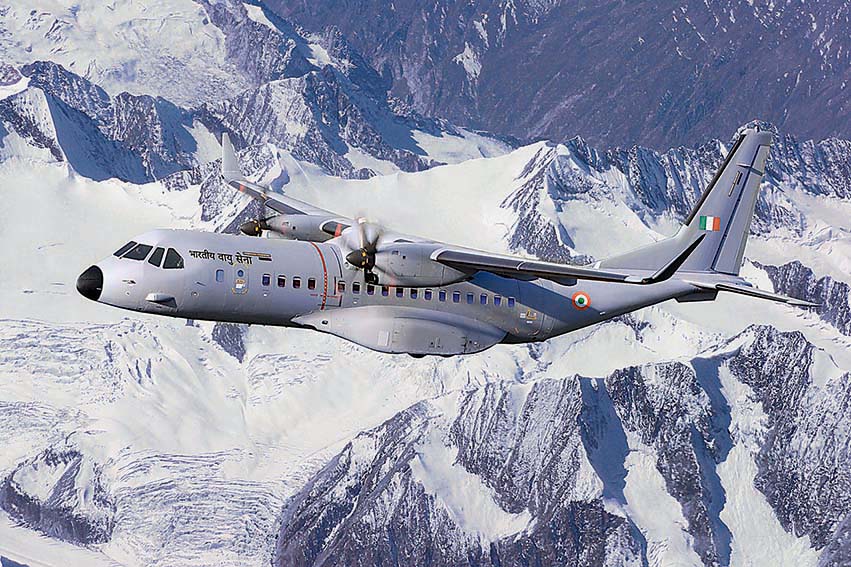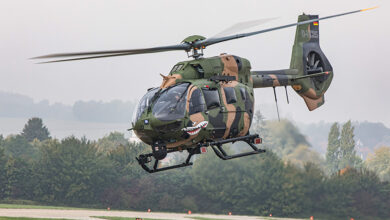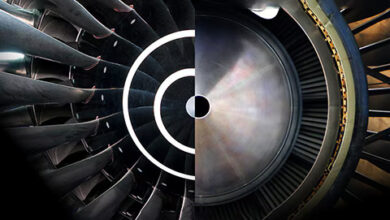IAF chief seeks self-reliance in design and development
New Delhi. As the country sharpens its focus on achieving self-reliance in defence, the Indian Air Force chief, Air Chief Marshal VR Chaudhari has stressed that Atmanirbharta should not be confined to production, but also include design and development, even as he called for building offensive and defensive space capabilities to safeguard assets, and developing directed energy weapons that have significant advantages over traditional weapons, a media report said.

He said stakeholder collaboration was imperative to achieve self-reliance, and without it, “we will wallow in the dark.”
“The key to faster development of niche technology is to identify core areas of development, clearly articulate requirements, and closely interact with the industry to design and develop the technology,” Chaudhari said while speaking at a seminar on India’s Aerospace Capabilities and Technology Requirements.
“Well established defence manufacturing public sector enterprises must hand-hold and get the developed technology into the market for mass production. Unless all stake holders come together, I am afraid, we will continue to wallow in the dark and not see tangible progress,” the IAF chief said. His comments come at a time when boosting self-reliance in the defence manufacturing sector is one of the top priorities for the government.
Indigenous research and development, and production of platforms, sensors and weapons will play a critical role in future capability building, he said.
The ongoing Russia- Ukraine conflict has shown that technological capability needs to be complemented with combat sustenance, and “our defence industries need to adopt the twin mantras of technical quality and production scalability to meet the requirements of armed forces in any future conflict,” he said.
In early March, the CDS, General Anil Chauhan. said that self-reliance in defence manufacturing was one of the biggest lessons for India from the ongoing Russia-Ukraine conflict, and the three services would have to be the driving force for the campaign to succeed.
The government has taken a raft of measures during the last three years to promote self-reliance. These include creating a separate budget for buying locally made military hardware, increasing foreign direct investment (FDI) from 49 per cent to 74 per cent, and notifying as many as 411 weapons and systems that cannot be imported.
The race to weaponise space has already started and the day is not far when the next war will be fought across land, sea, air, cyber and space, the IAF chief said. “We need to capitalise on our initial successes in space and prepare ourselves for the future. The Indian aerospace industry along with other players like Indian Space Research Organisation (ISRO) and Defence Space Agency (DSA) need to collaborate and chalk out the path for the future,” Chaudhari said.
“The weapons of India @100 would look very different from weapons of India @75,” he said, drawing attention to the technological advances likely over the next 25 years. Technology grows exponentially, and its effects are super exponential, he said.
“Directed energy weapons, particularly lasers, provide significant advantages over traditional weapons such as precision engagement, low cost per shot, logistical benefits and low detectability. Our defence industries need to further the development of these weapons and also integrate them onto airborne platforms to get desired ranges and accuracy.”
Over the years, India has mastered indigenous defence production of foreign designs under licence, Air Marshal Anil Chopra (Retd), director general, Centre for Air Power Studies, said.
“The next natural step, if we really want to be self-reliant, is to design modern systems and have intellectual property rights over them. This will not only help design systems of the future but also give us freedom of export to any country. Also, space is the next frontier that requires our attention. We have mastered basic space technologies, but the number of satellites has to go up significantly as we are far behind China on this front. Developing directed energy weapons is equally critical as these give you unlimited ammunition that can hit targets at the speed of light,” Chopra added.
Chaudhari said the air force’s focus was on building indigenous capabilities, and upgrading its older equipment.

“We are totally in sync with the government’s push towards Atmanirbharta and in the next few years, we are looking forward to inducting light combat aircraft (LCA) Mk 1A, HTT-40 trainers, indigenous weapons and a wide array of radars. The light combat helicopter (LCH) has been inducted and I am confident that the helicopter will add teeth to the IAF’s strike capability. We are fully committed to the development of LCA Mk 2 and the advanced medium combat aircraft (AMCA). The induction of C-295 aircraft is a step in the right direction and will boost the Indian aerospace manufacturing ecosystem.”
The C-295 medium transport aircraft will be manufactured in India jointly by Tata Advanced Systems Limited (TASL) and European firm Airbus Defence and Space.





